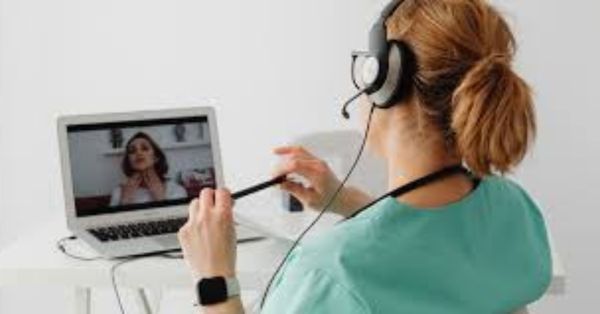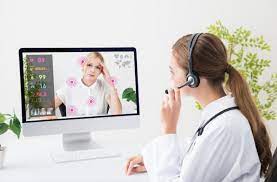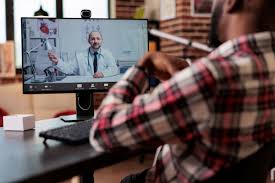How Digital Health Is Revolutionizing Rural Healthcare

How Digital Health Is Revolutionizing Rural Healthcare – Imagine waking up with a high fever in a remote village—miles away from the nearest clinic, without a doctor in sight. Now imagine reaching for your phone, tapping a few buttons, and speaking to a qualified healthcare professional within minutes. This isn’t science fiction. This is the reality digital health is creating for millions living in rural and underserved areas.
Healthcare has long been a tale of two worlds—one thriving with tech-savvy hospitals, instant diagnostics, and round-the-clock specialists, the other burdened by distance, underfunded clinics, and dire doctor shortages. But digital health solutions are closing that gap faster than anyone imagined. From telemedicine to AI-driven diagnostics and mobile health apps, innovation is reshaping how—and where—care is delivered.
But while the transformation is inspiring, it’s far from perfect. Let’s dive into the real story of how digital health is breaking barriers in rural communities—and the hurdles we still need to overcome.
The Rural Healthcare Crisis: A Silent Emergency
Before we talk solutions, we have to talk reality.
Rural areas worldwide, including in high-income countries, are often left behind when it comes to healthcare infrastructure. In places like sub-Saharan Africa, parts of Asia, and even regions in the U.S., the challenges are eerily similar—fewer hospitals, longer travel times, fewer doctors per capita, and high out-of-pocket costs.
According to the World Health Organization, half the world’s population lacks access to essential health services. And in rural communities, that number is significantly higher. Chronic diseases go unmanaged. Minor conditions spiral into major issues. Pregnant women travel hours—sometimes days—for check-ups. The phrase “too little, too late” becomes painfully literal.
But then came digital disruption.
Telemedicine: A Lifeline for the Isolated
Of all digital health innovations, telemedicine has arguably made the biggest splash—and for good reason.
Think about it: A farmer in rural Kenya can now video call a doctor in Nairobi using nothing but a smartphone. A grandmother in rural Appalachia can get her blood pressure checked remotely and adjust medications without ever stepping into a clinic.
Telemedicine bridges time, space, and access. It minimizes the need for travel, reduces costs, and enables continuous care. During the COVID-19 pandemic, it wasn’t just helpful—it was essential. For many remote communities, virtual consultations became their only point of contact with the healthcare system.
What makes it even more powerful? It’s scalable. One internet connection and a trained health worker can turn a small rural outpost into a care hub, connecting dozens—or even hundreds—of patients to city-based doctors.
mHealth: When Your Phone Becomes a Clinic
In areas where healthcare systems struggle, mobile phones are everywhere. And innovators have found ways to turn them into powerful health tools.
Mobile health (mHealth) apps are helping community health workers track maternal health, monitor chronic conditions like diabetes and hypertension, and even screen for depression. SMS reminders help patients stick to medication regimens. AI-powered chatbots provide health education in local languages, tailoring advice to cultural contexts.
One example? In India, ASHA workers use mobile apps to record patient data, access treatment protocols, and escalate emergency cases. These aren’t just gadgets—they’re lifelines.
And the best part? They’re personal. mHealth solutions meet patients where they are—literally and metaphorically. They’re designed to work with basic tech, offline capabilities, and user-friendly interfaces, all of which are critical in low-resource settings.

Remote Diagnostics: The Future, Now
Picture this: A child walks into a village clinic with a high fever. There’s no lab, no specialist, but there is a tablet with an AI-powered diagnostic tool. Within minutes, the system flags a likely malaria infection and recommends treatment—accurately.
That’s not wishful thinking. It’s already happening.
Artificial intelligence (AI) and machine learning tools are increasingly used in rural health to support diagnostics, triage cases, and identify at-risk populations. They’re especially valuable in places with limited specialist care.
For example, portable ultrasound devices connected to smartphones, interpreted via AI, are revolutionizing prenatal care in remote regions. Retinal scans using phone cameras help detect diabetic retinopathy early—without a single ophthalmologist in sight.
And while these tools don’t replace doctors, they dramatically extend their reach. They empower nurses, midwives, and community health workers to do more—with confidence and precision.
The Power of Data: Driving Smarter Decisions
Digital health isn’t just about devices—it’s about data. And in rural healthcare, data has been a missing piece for decades.
With digital records, apps, and monitoring tools, we can finally gather real-time information on what’s happening in hard-to-reach areas. That means governments and NGOs can deploy resources more strategically. It also helps track outbreaks, monitor vaccination rates, and identify underserved populations.
But perhaps more importantly, it gives rural communities visibility. They become more than just dots on a map. They become part of the healthcare narrative—something they’ve long been excluded from.
Challenges Still Standing in the Way
As exciting as this revolution is, there are still major obstacles to overcome.
1. The Connectivity Gap
Internet access remains patchy in many rural regions. A digital health app is useless without a stable signal. While mobile penetration is growing, connectivity—especially high-speed connections—is still far from universal.
2. Digital Literacy
Not everyone knows how to use a smartphone app or navigate a video consultation. Health workers need training. Patients need support. Tech adoption without user education is like building a road with no signage.
3. Infrastructure and Power
In places with frequent power cuts or no electricity at all, even the best digital tools sit idle. Solar-powered devices and offline modes help, but infrastructure investment must go hand-in-hand with digital innovation.
4. Privacy and Trust
Patients are understandably concerned about who sees their data and how it’s used. Building trust in digital platforms, especially in communities that have faced systemic neglect, requires transparency, regulation, and cultural sensitivity.
5. Sustainability
Many digital health pilots fizzle out due to lack of funding or long-term planning. We need solutions that are not just innovative but sustainable—built with communities, not just for them.
What’s Next? From Pilot Projects to Permanent Change
The next big leap in rural digital health isn’t a shiny new gadget—it’s integration.
We need systems that talk to each other. Apps that feed data into national health records. Telemedicine platforms that sync with local pharmacies. Tools designed with the end-user in mind—not just the donor.
And most importantly, we need policies that make digital health a core part of healthcare planning—not just an afterthought or emergency patch.
Governments, NGOs, tech companies, and local communities must come together with a shared goal: health equity.
Read: Why Medical Research Matters in Everyday Healthcare
Final Thoughts: The Digital Health Revolution Is Just Getting Started
Here’s the truth: We’re living in a moment of radical possibility. Digital health isn’t just about technology—it’s about justice. It’s about giving every person, no matter where they live, the right to a healthy life.
We’re not there yet. But step by step, byte by byte, we’re building a future where healthcare doesn’t stop at the city limits.
So whether you’re a policymaker, a tech entrepreneur, or just someone who believes in equal access—now’s the time to lean in. The barriers are coming down. Let’s make sure the bridges we build are strong enough for everyone to cross.







